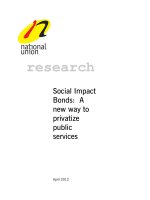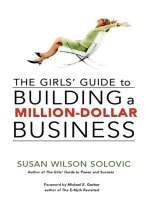Debating the Best Way to Learn a Language doc
Bạn đang xem bản rút gọn của tài liệu. Xem và tải ngay bản đầy đủ của tài liệu tại đây (71.11 KB, 5 trang )
Debating the Best Way to Learn a Language
This is the VOA Special English Education Report.
What is the best way to learn a new language? A small study of foreign language learning in
adults compared two methods. One is known as the explicit or classroom method. This is the kind
of traditional classroom teaching where students are taught a lot of information about grammar
rules.
The other method is known as the implicit or immersion method. The idea here is to learn much
the way children do when they learn a native language. That is, by being with native speakers and
absorbing the language that surrounds them, generally without a lot of explanation.
Teachers may combine these two methods into what Professor Michael Ullman calls immersion-
style classroom teaching. But is that necessarily a better way to learn a language?
Mr. Ullman was the senior investigator for the new study. He is a professor of neuroscience at
Georgetown University Medical Center in Washington. He says he was surprised to find that
combining the two methods might not help the brain in processing the new language.
MICHAEL ULLMAN: "You know, if my life were on the line, and I had to learn a language,
what would I do? I'm not sure. One possibility would be that, to start with explicit and then go to
immersion, right? Start with classroom and then go to immersion. But there is this possibility that
classroom could hurt later immersion. That's what, you know, one possibility of interpreting our
data."
The Public Library of Science published the study earlier this year. The twenty-one adults in the
experiment learned Brocanto2, a thirteen-word language created for the study. The words and
grammar rules relate to a computer game similar to chess that the learners played. For example,
"Blom neimo lu neep li praz" means "The square blom-piece switches with the neep-piece."
The researchers tested the people three to six months after they had learned the language, to see
how well they could remember it. The study found that those who had learned it with the
immersion method had brain waves similar to those of native speakers of a language when
speaking that language.
Professor Ullman says those who trained with the classroom method also became more native-like
in their brain processing. But only the immersion group showed full native-like processing of the
grammar. Still, he says teachers should be careful how they use the results of his study.
MICHAEL ULLMAN: "You know I would not make any curriculum changes based on this.
Nevertheless, it is suggestive, and I think it warrants further research to see whether in fact what
kind of training might in fact be best not just for reaching the native brain bases but also for, you
know, maximum proficiency in different aspects of language, like grammar, you know, syntax and
lexicon. So I think further research is warranted. And it may be, for example, that a combination
of classroom and immersion might be best. But we don't know that."
And that's the VOA Special English Education Report, written by Christopher Cruise. You can
find a link to the study at voaspecialenglish.com. I'm Steve Ember.
Conflicts Keep Millions of Children Out of School
This is the VOA Special English Education Report.
Conflicts around the world are keeping tens of millions of young people from going to school.
Many have physical or emotional injuries that make it hard or even impossible for them to learn.
Later this year UNESCO will release its twenty-twelve "Education for All Global Monitoring
Report." UNESCO is the United Nations Educational, Scientific and Cultural Organization. The
yearly publication is part of a global campaign to provide primary education to all children within
the next three years.
The report documents the situation in countries that have made the least progress toward the
Millennium Development Goals. These goals require universal primary education and equality for
boys and girls in schooling by twenty-fifteen.
Pauline Rose is the director of the report.
PAULINE ROSE: "In those thirty-five conflict-affected countries, we find twenty-eight million
children out of school. In some countries, it's just that schools are not even accessible in conflict
zones. The teachers aren't there. The schools are sometimes even attacked."
The Geneva Conventions bar the targeting of public places like schools and hospitals. In some
cases, schools are targeted because they represent the government. Pauline Rose says in other
cases, schools are targeted for religious or political reasons.
PAULINE ROSE: "So in Afghanistan, given that the idea of girls going to school has been part of
the concern of some militant groups, that has been a cause for their direct attack on girls schools.
In other parts of the world, it might be more that schools are caught in the crossfire."
Conflicts also put girls and boys at risk of sexual violence. Schoolchildren are also at risk of
being forced to become soldiers.
Under international law, refugees are the only displaced people with a guaranteed right to
education. But that guarantee often means little. Schools in refugee camps often have limited
money for teachers or supplies.
Last year, Pauline Rose visited the Dadaab camps in northern Kenya. Those camps shelter more
than two hundred fifty thousand refugees from Somalia.
PAULINE ROSE: "So you have half of children without any access to school. You have sort of
classes of over three hundred children, and I mean just the conditions getting worse and worse."
What if conflict states in sub-Saharan Africa moved just ten percent of their military spending to
education? UNESCO says they could educate more than one-fourth of their out-of-school
population. And in Pakistan, it says twenty percent of the military budget could provide primary
education for all children.
But experts say one country has been a real success story. For years, Botswana has used its wealth
from diamond exports to finance universal primary education and to create a skills base for its
growing economy.
And that's the VOA Special English Education Report. I'm Jim Tedder.
Tomato's Genetic Secrets Are Peeled Away
This is the VOA Special English Agriculture Report.
Scientists have made a genetic map of the tomato. Tomatoes are second only to potatoes as the
world's most valuable vegetable crop. Eight years of work went into making the map, or genome.
Three hundred scientists around the world took part in the project to sequence the tomato's DNA
code. Giovanni Giuliano, a researcher in Italy, is part of the Tomato Genome Consortium.
GIOVANNI GIULIANO: "We started as ten countries and we now are fourteen."
Mr. Giuliano says having the tomato's genetic map will help growers who are always trying to
produce a better tomato.
GIOVANNI GIULIANO: "And of course, this will be facilitated now by the fact that we now
know not only what genes are there, but their order."
Researchers published the genome of a tomato used by Heinz, the American food company
famous for its tomato ketchup. The thick sauce is used on hamburgers, hot dogs and other foods.
Heinz's research manager, Rich Ozminkowski, says the company knows what it wants in a tomato.
RICH OZMINKOWSKI: "Traits like sugars and, for Heinz, viscosity, or the juice thickness, and
the redness of the tomatoes are all very critical traits for us, for our products. Those are all
controlled by a lot of different genes within a tomato naturally."
Mr. Ozminkowski says genome sequencing takes away much of the guesswork for breeders of
tomatoes or other crops that have been mapped.
RICH OZMINKOWSKI: "By having the genome information, we can pick out those tomato
plants that have more of those genes."
Until the late nineteen sixties, the tomatoes that Heinz used to make ketchup often cracked open
on the vine after a heavy rain.
RICH OZMINKOWSKI: "Heinz had set about trying to put together a variety of tomatoes that
would resist that cracking."
Breeders used the traditional methods of mating generations of different varieties. The tomatoes
they were trying to develop not only had to resist cracking. They also had to resist disease. And
they had to be easy to harvest mechanically.
Finally the company came up with the tomato it wanted, called the Heinz 1706. Mr. Ozminkowski
says the job would have been much easier if there had been a genetic map to follow.
RICH OZMINKOWSKI: "The tools available back when 1706 was developed, it was all very,
very conventional breeding. There were no genetic tools. You could not look at sequences. You
could not do comparisons. And that is what makes the genomic project and the technologies that
have spun off of that so interesting."
But the work is not just about making better ketchup. Climate change may force many crops to
adjust to new conditions. And Mr. Ozminkowski says researchers are already using the new
genetic tools to help fight new plant diseases.
RICH OZMINKOWSKI: "And so this is going to give us even more, because there are new
diseases that are becoming problems within California and around the world."
Researchers published the tomato genome in the journal Nature.
And that's the VOA Special English Agriculture Report. You can read, listen and learn English
with our stories and more at voaspecialenglish.com. You can also find more information about
tomatoes. I'm Jim Tedder.









